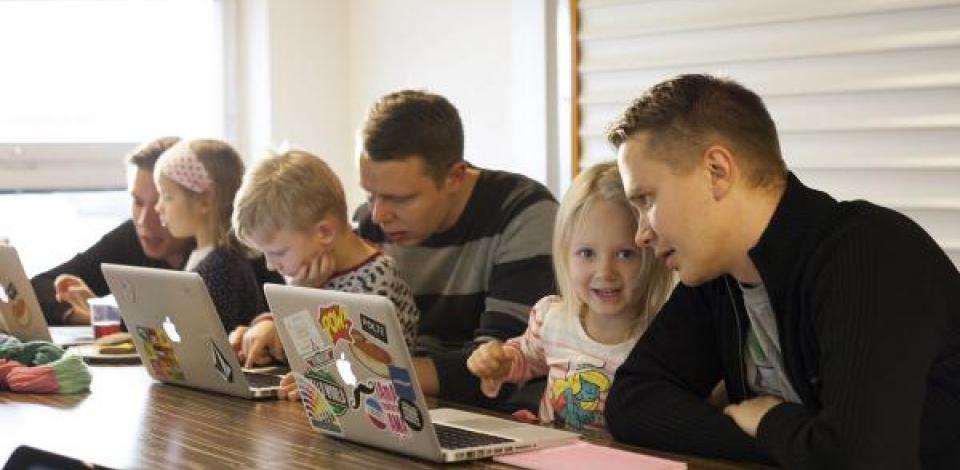Not so long time ago, I was a teacher for 1st grade children. Society is changing fast, and education has to adapt fast too – And that’s why one of the main questions while preparing for my classes was to introduce the kids to numeric possibilities.

Sure, almost every child has now a tablet at home, or a computer that they can use, but mostly for watching cartoons or playing some video games but are finally child old enough to use numeric tools in a more “in-depth” way? The answer seems to be a bold yes, as Koodikoulu is encountering a huge success amongst children from 4 to 9 years old as the first 15 spots were filled in minutes and the school has now 300 children on the waiting list.
“The idea came from Juha Paananen, one of the programmers here at Reaktor. He started to teach his 4-year old daughter Mila to program. He also started a blog girls cant code where the held a diary about the lessons. Word started to spread among our employees and they asked Juha to teach their offspring too, and he did. The lessons were succesfull and the joy of the children palpable. We though “If our people like this so much, others would maybe enjoy them, too” And so in January 2014 we held the first public coding school at Reaktor offices,” says Ville Valtonen from Reaktor.
Facing the success of the experience, they quickly realized that they will not be able to fulfil the needs for all Finnish kids and decided then to challenge the IT companies to hold coding schools, offering them all the material for free and open source, and helped them with the marketing. The companies took the challenge and in 2014 more than 100 coding schools were held at company premises, libraries and many other places.
“Our aim is to give every child a chance to try programming – And of course not everybody has to become a programmer.”
Those classes, paid mostly by companies, are free for kids. And that is the only option in order to offer same chances to any children to discover a new passion or at least trying new things.
Shouldn’t this initiative get more support from Ministry of Education? It’s an interesting question to ask, when many countries are actually struggling with the position of numeric tools and their use in the classrooms.





